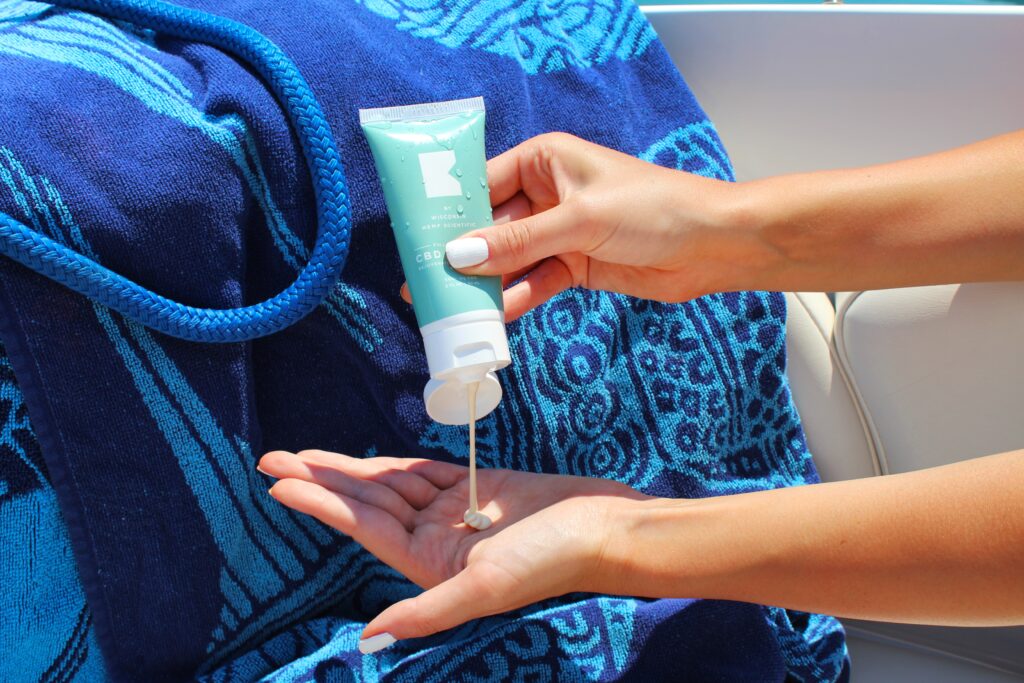
Introduction:
Taking care of our skin is of utmost importance to maintain its health and appearance. Among the myriad of skincare products available, sunscreen and moisturizer are two essential components. But what is the correct order of application? What to apply first sunscreen or moisturizer? In this article, we will delve into the importance of sunscreen and moisturizer, understand their purposes, explore the factors to consider when deciding the order of application, hear expert opinions, debunk common misconceptions, and provide tips for effective application. So, let’s dive in and unravel the ultimate skincare dilemma: what to apply first sunscreen or moisturizer?
Table of Contents
The Importance of Sunscreen and Moisturizer in Skincare
Before we delve into the order of application, it is crucial to understand the significance of sunscreen and moisturizer in our skincare routine. Sunscreen acts as a protective shield against harmful UV rays, preventing sunburns, premature aging, and reducing the risk of skin cancer. On the other hand, moisturizer plays a vital role in hydrating the skin, improving its barrier function, and preventing dryness and flakiness. Both products work synergistically to maintain the health and integrity of our skin.
Understanding the Purpose of Sunscreen and Moisturizer
Sunscreen and moisturizer have distinct purposes when it comes to skincare. Sunscreen primarily focuses on shielding our skin from the damaging effects of the sun’s UV radiation. It contains active ingredients that either absorb or reflect UV rays, acting as a barrier between the skin and the sun. Moisturizer, on the other hand, focuses on hydrating and nourishing the skin. It replenishes the skin’s moisture content, locks in hydration, and helps maintain a healthy skin barrier. Understanding these purposes is crucial in determining the order of application.
What to apply first sunscreen or moisturizer?
The Order of Application: Sunscreen or Moisturizer First?
Now comes the ultimate question: should sunscreen be applied before moisturizer or vice versa? The answer may vary depending on various factors. One school of thought suggests applying sunscreen as the final step of your skincare routine to ensure its efficacy. By applying sunscreen last, you are creating a protective barrier that seals in the benefits of the previous skincare products. However, another school of thought argues that applying moisturizer before sunscreen enhances the absorption and effectiveness of the sunscreen, allowing it to penetrate the skin more effectively. Ultimately, the choice boils down to personal preference and how your skin responds to different application methods.
Factors to Consider When Deciding the Order of Application
When deciding the order of application, several factors should be taken into consideration. Firstly, consider the texture and consistency of your skincare products. If your sunscreen has a thicker consistency, applying moisturizer first may help in preventing a heavy and greasy feeling on the skin. Secondly, consider your skin type. If you have dry or dehydrated skin, applying moisturizer before sunscreen can provide an additional layer of hydration. On the other hand, if you have oily or acne-prone skin, applying sunscreen before moisturizer can help control excess oil production. Lastly, consider the specific instructions provided by the manufacturers of your skincare products. Some products may have specific guidelines on the order of application for optimal results.
Expert Opinions on the Order of Application
To shed light on this skincare dilemma, we reached out to skincare experts for their opinions. Dr. Emily Johnson, a renowned dermatologist, suggests applying sunscreen as the final step in the skincare routine. According to her, this allows the sunscreen to form a barrier, protecting the skin from external aggressors. On the other hand, Dr. David Lee, a cosmetic chemist, recommends applying moisturizer before sunscreen. He believes that moisturizer prepares the skin by providing hydration, allowing the sunscreen to be absorbed more effectively. These expert opinions highlight the different perspectives in the skincare community, emphasizing the importance of personal experimentation to find what works best for your skin.
Note: Explore “Top 10 insider beauty tips for healthy glowing skin”
Tips for Applying Sunscreen and Moisturizer Effectively
No matter the order of application, it is crucial to apply sunscreen and moisturizer effectively to reap their benefits fully. Begin by washing your face with a gentle cleanser to eliminate any dirt or pollutants. After cleansing, apply a suitable moisturizer that caters to your skin type, gently massaging it onto your face and neck. Allow the moisturizer to fully absorb before moving on to sunscreen. When applying sunscreen, make sure to use the recommended amount to ensure adequate coverage. Apply it evenly on your face, neck, and any exposed areas of your body. Don’t forget to reapply sunscreen every few hours, especially if you are exposed to the sun for an extended period.
How often should you apply sunscreen?
It is recommended to reapply sunscreen every two hours for consistent protection. However, if you are sweating or swimming, you should reapply sunscreen at least every 80 minutes 3. It is also important to use enough sunscreen to achieve full broad-spectrum protection. Generally, you should use about one ounce of sunscreen for your entire body.
What is difference between physical and chemical sunscreens
Physical and chemical sunscreens act in different ways to protect your skin from the sun’s damaging rays. Physical sunscreens, sometimes called mineral sunscreens, form a physical barrier on the skin that reflects the sun’s rays. They contain active chemicals like zinc oxide and titanium dioxide, which sit on top of the skin and reflect the sun’s rays away. Chemical sunscreens, on the other hand, contain active chemicals like avobenzone, octinoxate, and oxybenzone, which absorb sunlight and transform it into heat, which is subsequently expelled from the body.

Physical sunscreens are generally seen to be less irritating to the skin and are advised for those with sensitive skin. They are also effective immediately after application and do not require a waiting period before sun exposure. However, they can be difficult to apply and may leave a white residue on the skin.
Chemical sunscreens, on the other hand, are easy to apply and leave no white residue on the skin. They are also more water-resistant than traditional sunscreens and less likely to rub off during vigorous activity. However, they can take up to 20 minutes to become effective after application and can cause skin irritation in some persons.
Read more at healthline.com
Should I wait between applying sunscreen and moisturizer? If so, how long?
Waiting a few minutes allows the sunscreen to set. Aim for 5-10 minutes before applying moisturizer.
Waiting a few minutes between applying sunscreen and moisturizer is recommended to allow the sunscreen to properly adhere to the skin and form a protective barrier. Aim for a waiting period of 5 to 10 minutes before applying moisturizer. This ensures that the sunscreen has adequate time to set and provides effective sun protection. Patience during this interval enhances the overall efficacy of both the sunscreen and moisturizer in your skincare routine.
Common Misconceptions About Sunscreen and Moisturizer Application
There are several misconceptions surrounding sunscreen and moisturizer application. One common myth is that sunscreen can replace moisturizer. While sunscreen provides some degree of hydration, it is not sufficient to replace the benefits of a dedicated moisturizer. Another misconception is that applying a higher SPF sunscreen allows for a longer time in the sun without reapplication. However, SPF only indicates the level of protection against UVB rays and does not account for UVA protection or the need for regular reapplication. It is essential to debunk these misconceptions to ensure a well-rounded skincare routine.
The Role of SPF in Sunscreen and Its Effect on Moisturizer Application
SPF plays a crucial role in sunscreen and affects the application of moisturizer. SPF, or Sun Protection Factor, quantifies the level of protection against UVB rays. Higher SPF values indicate higher protection levels. When it comes to the order of application, if you choose to apply sunscreen before moisturizer, make sure to select a sunscreen with a high SPF, preferably broad-spectrum, to ensure adequate sun protection. This way, the moisturizer can be applied on top of the sunscreen without compromising its effectiveness.
The Importance of Consistency in Skincare Routine
Regardless of the order of application, consistency is key in any skincare routine. Establishing a consistent skincare routine allows your skin to adapt and benefit from the products you use. Stick to a routine that works for you and give it time to show results. Additionally, consistency in reapplying sunscreen throughout the day is crucial for maintaining sun protection. Remember, skincare is a long-term commitment, and patience is key.
Conclusion
In conclusion, the ultimate skincare dilemma of what to apply first, sunscreen or moisturizer, does not have a one-size-fits-all answer. It ultimately depends on personal preference, skin type, and the specific properties of your skincare products. Experimentation and finding what works best for your skin is essential. Remember to prioritize both sunscreen and moisturizer in your skincare routine, as they play distinct but equally important roles in maintaining the health and appearance of your skin. So, go ahead, take care of your skin, and embrace the beauty that comes with a well-rounded skincare routine.
Note: “Discover radiant skin: Read our blog on ‘8 Powerful Dry Fruits for Glowing Skin’ now!”
FAQs
Why is the order of sunscreen and moisturizer important in a skincare routine?
The order is crucial as sunscreen should form a protective barrier on the skin, while moisturizer hydrates and seals in moisture. Applying sunscreen first ensures its effectiveness.
Can I mix sunscreen and moisturizer together for a quicker application?
It’s not recommended. Mixing may dilute the SPF, compromising sun protection. Apply them separately for optimal results.
Does the order of application change for morning and night skincare routines?
Yes, during the day, apply sunscreen before moisturizer. At night, apply moisturizer first to hydrate your skin.
Can I skip moisturizer if my sunscreen is already hydrating?
It’s advisable to use a separate moisturizer. Sunscreen provides sun protection, but a moisturizer addresses hydration differently.
Is it necessary to use both sunscreen and moisturizer every day?
Yes, both play essential roles. Sunscreen protects against UV rays, while moisturizer maintains skin hydration.








